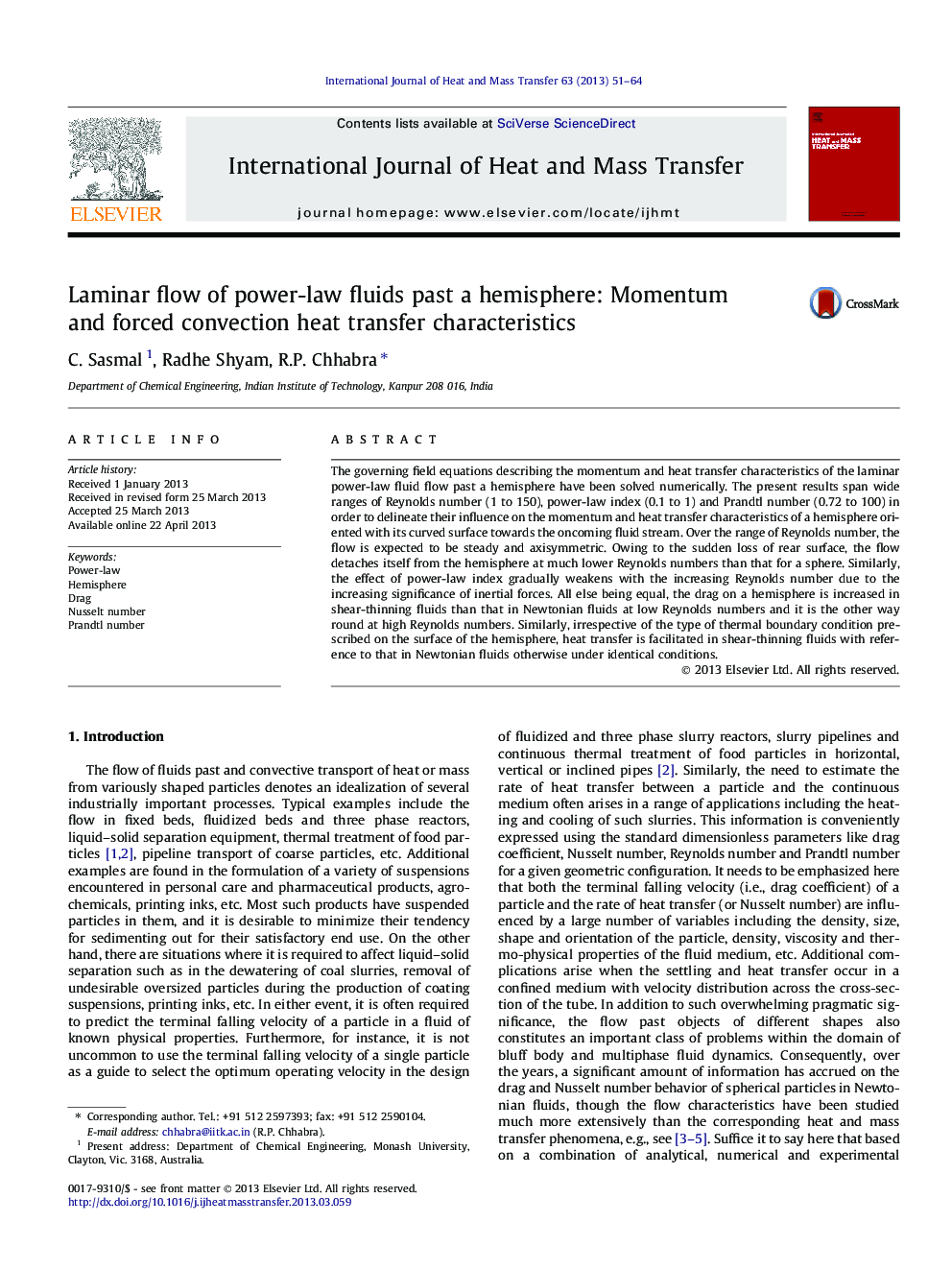| Article ID | Journal | Published Year | Pages | File Type |
|---|---|---|---|---|
| 658146 | International Journal of Heat and Mass Transfer | 2013 | 14 Pages |
Abstract
The governing field equations describing the momentum and heat transfer characteristics of the laminar power-law fluid flow past a hemisphere have been solved numerically. The present results span wide ranges of Reynolds number (1 to 150), power-law index (0.1 to 1) and Prandtl number (0.72 to 100) in order to delineate their influence on the momentum and heat transfer characteristics of a hemisphere oriented with its curved surface towards the oncoming fluid stream. Over the range of Reynolds number, the flow is expected to be steady and axisymmetric. Owing to the sudden loss of rear surface, the flow detaches itself from the hemisphere at much lower Reynolds numbers than that for a sphere. Similarly, the effect of power-law index gradually weakens with the increasing Reynolds number due to the increasing significance of inertial forces. All else being equal, the drag on a hemisphere is increased in shear-thinning fluids than that in Newtonian fluids at low Reynolds numbers and it is the other way round at high Reynolds numbers. Similarly, irrespective of the type of thermal boundary condition prescribed on the surface of the hemisphere, heat transfer is facilitated in shear-thinning fluids with reference to that in Newtonian fluids otherwise under identical conditions.
Related Topics
Physical Sciences and Engineering
Chemical Engineering
Fluid Flow and Transfer Processes
Authors
C. Sasmal, Radhe Shyam, R.P. Chhabra,
